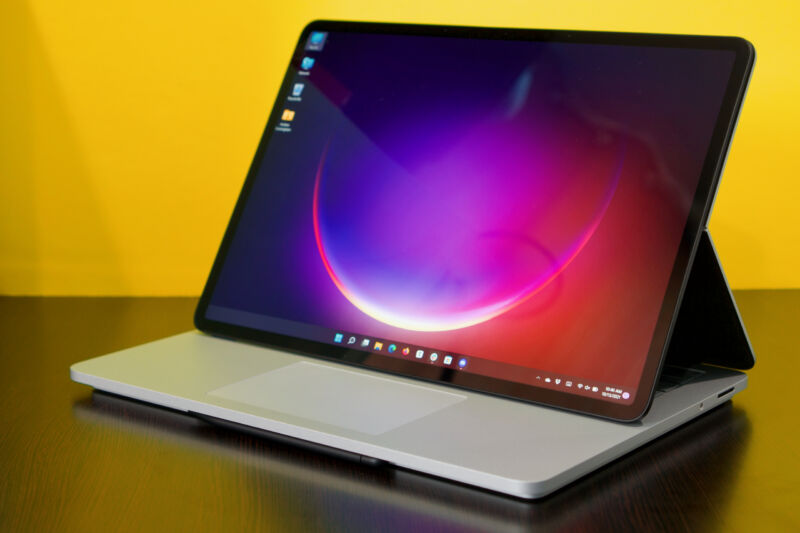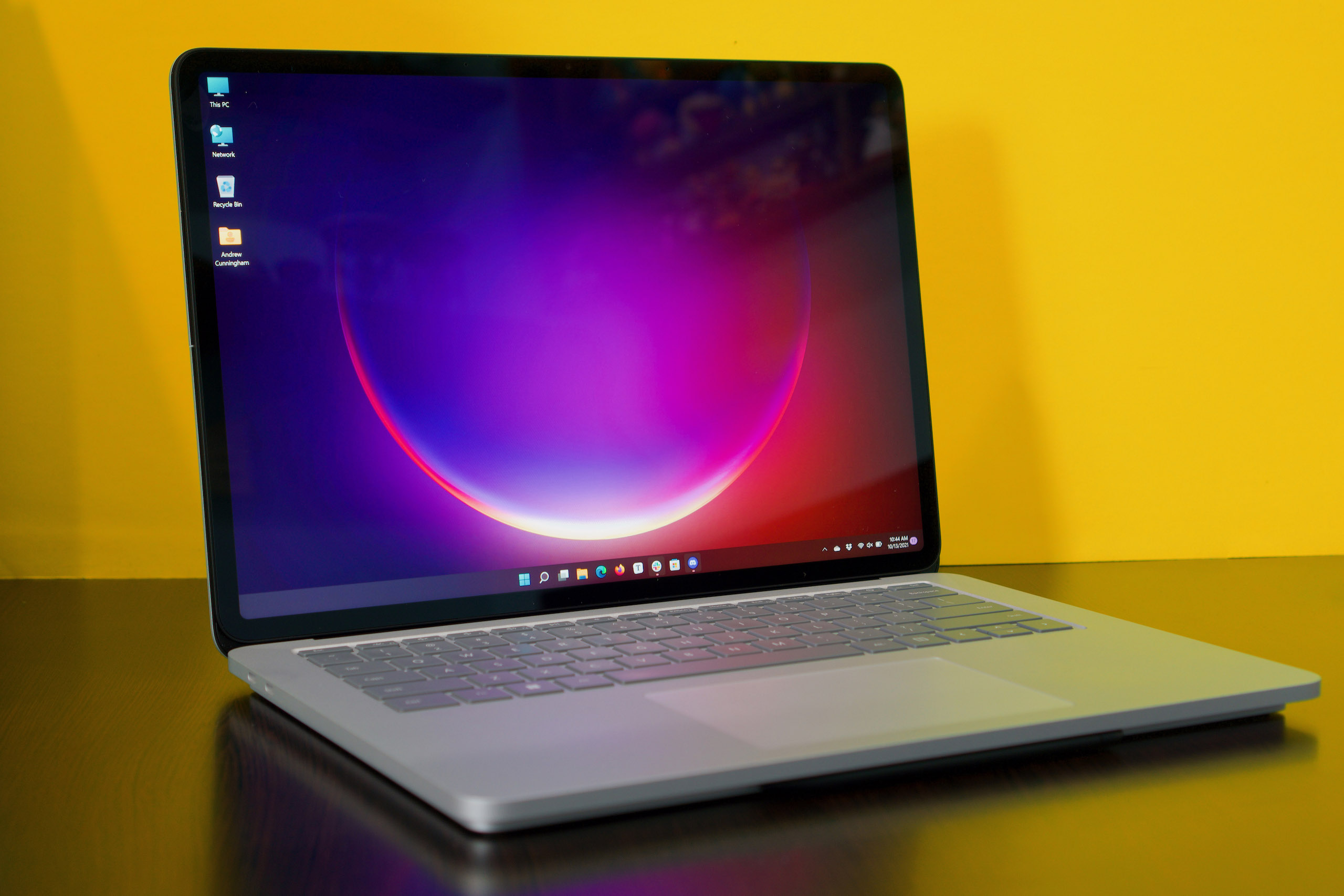
The Surface Pro 8, with its larger screen and performance improvements, is the star of Microsoft’s Surface lineup. But for people who prefer true laptops to convertible tablets, a new family member merits a look: the Surface Laptop Studio.
Like the old Surface Book, the Surface Laptop Studio wants to be a regular laptop with the option to get the keyboard out of the way when it’s time to draw or write with the Surface Pen. But where the Surface Book’s screen could be removed entirely from its base, the Laptop Studio has an attached screen with a folding hinge—not totally unlike the old Surface Studio desktop that it’s named for.
So where does the Surface Laptop Studio fit into the new Surface lineup? How does it stack up to the old Surface Book design? And how does it compare to other premium large-screened laptops from the other PC makers?
Table of Contents
Microsoft Surface Laptop Studio
A solid, if strange, laptop
The Laptop Studio inherits a rock-solid, all-aluminum design from the old Surface Book. Something about the way the metal has been treated makes it softer to the touch than the aluminum finish on a MacBook Air or Pro, and it feels nice against my wrists and palms.
But the weirdo bendy-straw hinge of the Surface Book is gone, which makes the Laptop Studio look more like a regular laptop. I say "more like" because this is still a strange design—most high-end pro laptops have some kind of taper or curve to their design to minimize hard lines and reduce their size. The Surface Laptop Studio is conspicuously flat and slab-like, rounded at its four corners but aggressively angular everywhere else.

Viewed from the top down, the Surface Laptop Studio looks more like a conventional laptop, with a backlit chiclet-style keyboard, a large one-piece trackpad, and a 14.4-inch 2400×1600 screen with a uniform, narrow-ish bezel. Like other Surface devices, the screen uses a 3:2 aspect ratio rather than the typical 16:9 (or the increasingly common 16:10), creating extra vertical space for photos and documents.
The screen supports a fast 120 Hz refresh rate, which makes Windows 11’s new animations look appealingly smooth. Unlike the Surface Pro 8, the Laptop Studio uses that faster refresh rate by default. The screen also has an excellent (for an IPS panel) 1675:1 contrast ratio and a maximum brightness of 506 nits, according to our i1DisplayStudio colorimeter.
The only downsides are the screen's high reflectivity and its color gamut coverage, which supports 100 percent of the sRGB gamut but only 84 percent of the DCI-P3 gamut. Multiple laptops in this price range from Apple, Dell, Lenovo, HP, and other PC makers can display this wider color gamut, but most devices in the display-centric Surface lineup still don’t.
-
The Laptop Studio's keyboard is excellent, with firm keys and decent travel.Andrew Cunningham
-
The Surface Laptop Studio's keyboard and its haptic trackpad.Andrew Cunningham
Both the keyboard and trackpad are very good, as they generally are on Microsoft's products. The chiclet keyboard's firmness and travel are roughly on par with Dell's most recent XPS 13 and 15 laptops or Apple's post-butterfly MacBook keyboards. The trackpad may be more jarring to some people, though it will feel very familiar to longtime Mac users: the trackpad doesn't have a physical hinge, so it doesn't "click" in the traditional sense. As Apple has been doing in its MacBooks for years now, the Laptop Studio uses haptic feedback to simulate the feel of a physical click.
After years of using a MacBook, I don't mind this feeling, and I even prefer this kind of trackpad sometimes because the "click" effect feels exactly the same across the entire trackpad—and it makes so much less noise than physical clicking. But if this is your first experience with a haptic trackpad, it might take some getting used to. The Windows settings allow you to tune the firmness of the haptic feedback; I think it feels best with the haptics turned all the way up, which is also how I set it in macOS, but you can make it lighter or even turn it all the way off if that's what you prefer.
reader comments
131